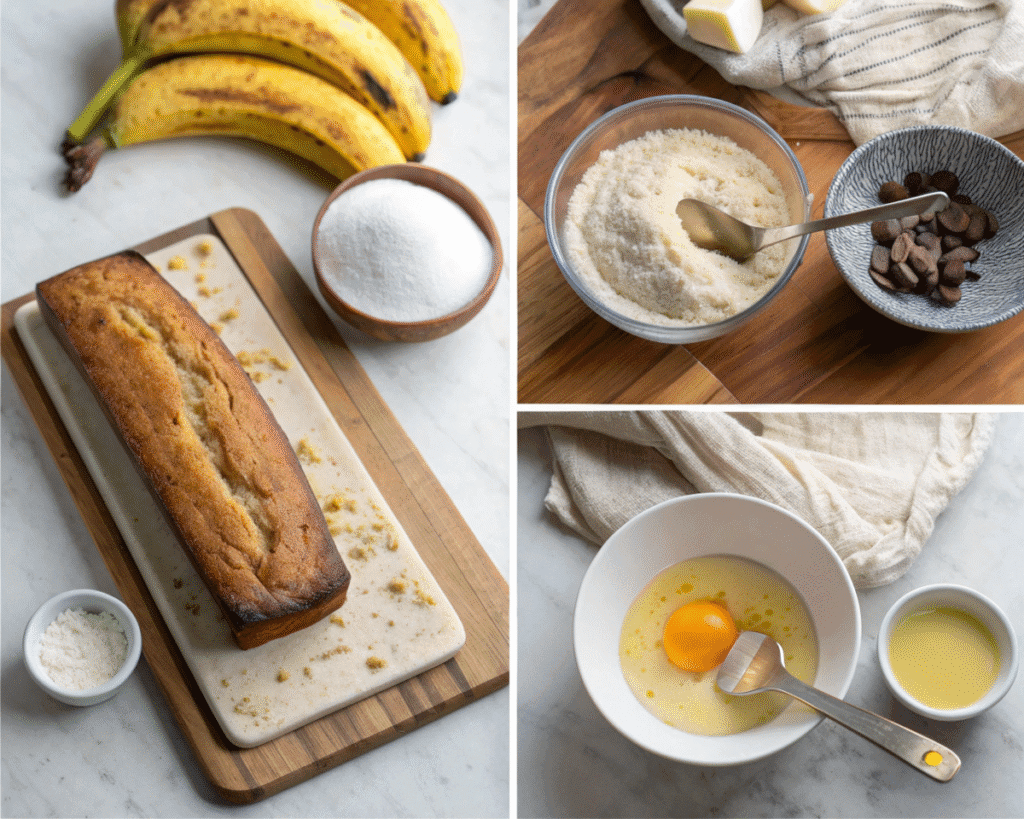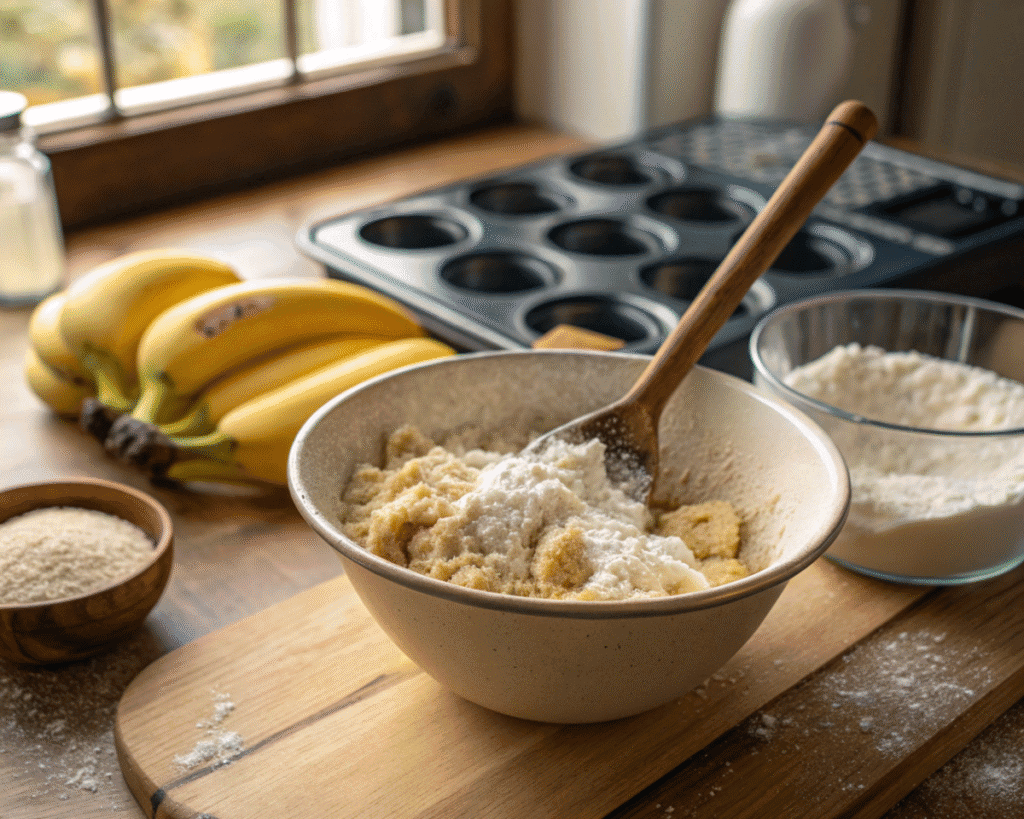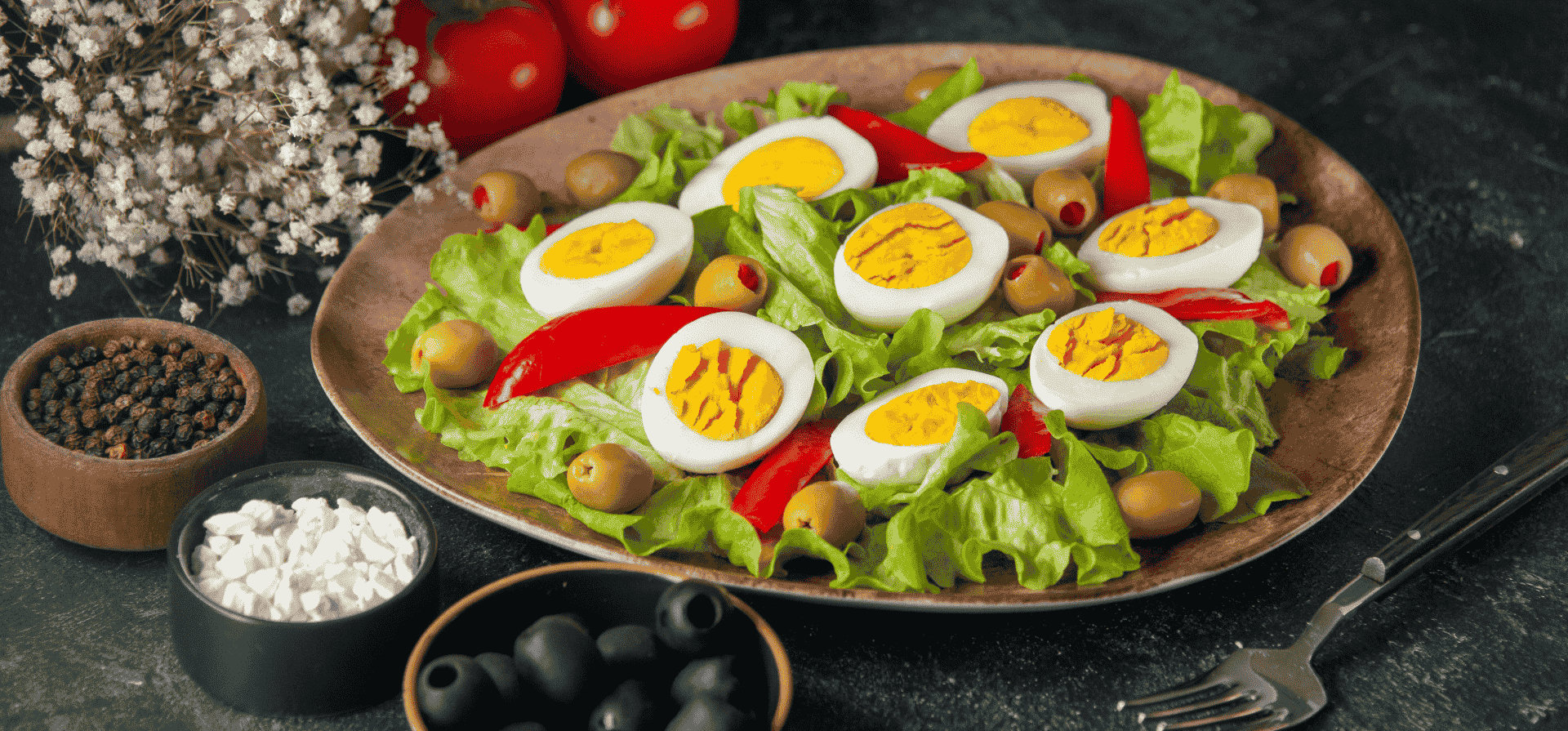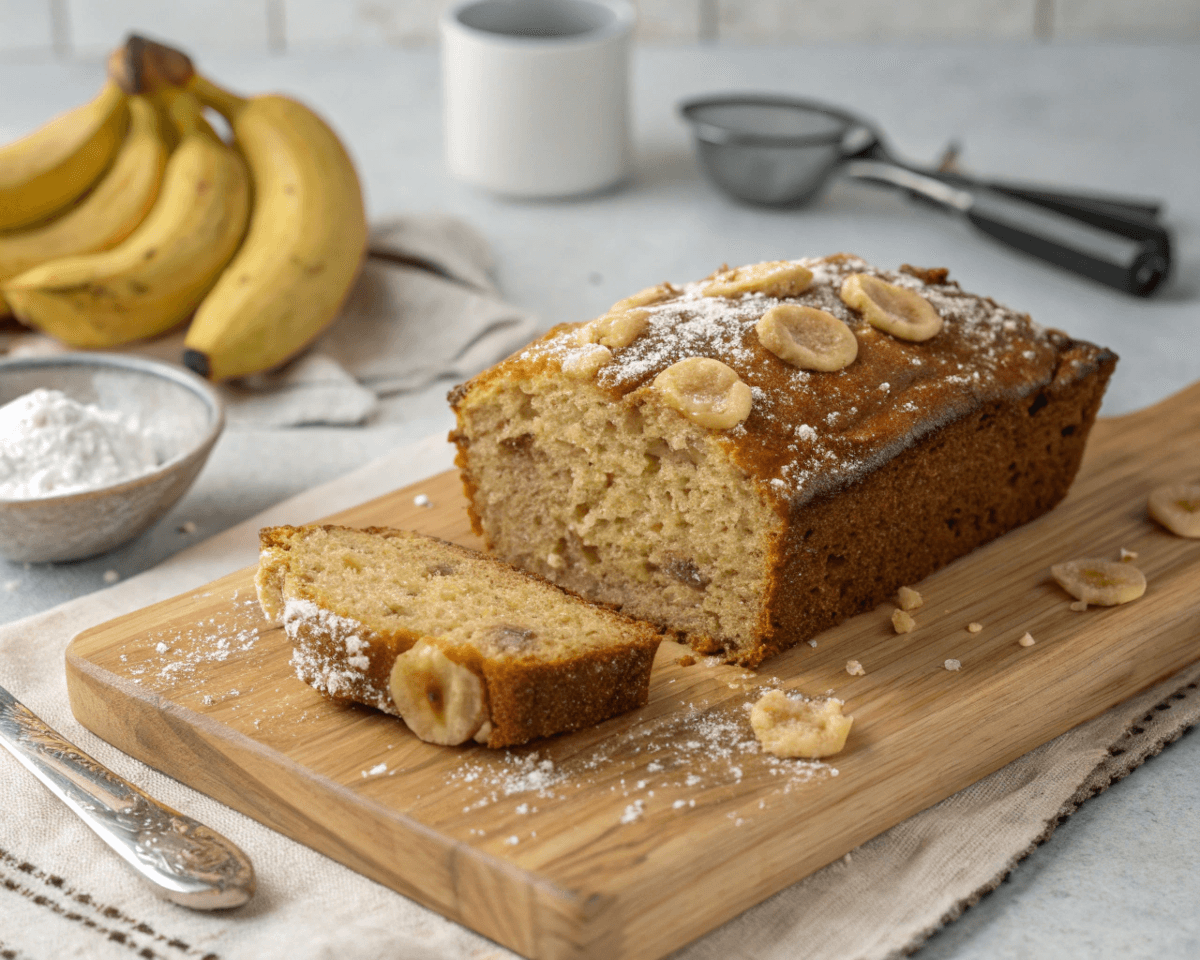The Ultimate Guide to Banana Bread
Banana bread—this warm and comforting treat fills your kitchen with mouth-watering aromas. It’s a cozy classic that everyone loves. Whether you’re an experienced baker or a beginner looking for a simple recipe, banana-bread is a staple in every home. In this guide, we will explore the origins of banana bread, share the best recipes, discuss fun variations, and even provide some health benefits and storage tips. Grab those ripe bananas, and let’s dive into baking!
Introduction to Banana Bread
What is Banana–Bread?
Banana bread is a delicious baked treat made with mashed bananas, flour, sugar, eggs, and other essential ingredients like butter or oil. As a quick bread, it doesn’t require yeast or a long rise time, which makes it both easy to make and enjoy. With its moist, soft texture and naturally sweet flavor, it’s no wonder that banana bread is a favorite around the world. Whether served warm straight from the oven or toasted for breakfast, this classic treat never goes out of style!
Why is Banana–Bread So Popular?
The popularity of banana bread can be attributed to a few key factors. First, it’s incredibly easy to make. With just a few basic ingredients, often found in most pantries, you can have a loaf ready in no time. Second, it’s a perfect way to use overripe bananas that might otherwise be wasted. The natural sweetness of the bananas really shines, making banana bread a practical and tasty treat. And let’s not forget how versatile it is! Whether you like it plain, with chocolate chips, or filled with walnuts, there’s no wrong way to enjoy it.
History and Origins of Banana Bread
Where Did Banana–Bread Come From?
Believe it or not, the origins of banana bread are tied to the rise of baking powder in the early 20th century. While bananas have been around for centuries, it wasn’t until the 1930s that this beloved treat truly became popular. The first recipes for banana bread started appearing in cookbooks during this time, as processed baking powders became more common and baking methods shifted toward quicker, easier techniques. This allowed for the creation of a simple, yeast-free bread—ideal for busy families in need of a fast and fuss-free recipe.
Interestingly, banana bread really took off in the United States during the Great Depression. With many households turning to more economical cooking methods, overripe bananas—once considered waste—became an essential ingredient for making the most out of limited resources. As a result, this simple yet delicious bread became a staple in homes, loved not only for its flavor but also for its practicality and cost-effectiveness.
The Evolution of Banana–Bread Over Time
Over the years, banana bread has evolved from a simple, no-frills recipe to a more sophisticated treat with endless variations. In the early days, recipes were very basic, typically including flour, sugar, bananas, eggs, and a bit of salt. However, as baking techniques advanced and more ingredients became accessible, bakers began experimenting with add-ins like chocolate chips, nuts, and spices like cinnamon and vanilla. Today, you can find every possible version of banana bread, from gluten-free options to versions that include coconut, berries, or even swirls of peanut butter.
What’s fascinating is that despite these changes, the humble banana bread has never lost its appeal. It has remained a beloved comfort food, reminding us of simpler times and satisfying our sweet tooth with every bite.
The Best Banana Bread Recipe
Ingredients for the Perfect Banana-Bread

If you want to make the ultimate banana bread, you don’t need to be a pro baker—just a few simple ingredients and you’re all set! Here’s a basic list of what you’ll need:
- 3 ripe bananas (the riper, the better!)
- 1/2 cup of melted butter
- 1 cup of sugar (white or brown)
- 2 eggs
- 1 teaspoon of vanilla extract
- 1 teaspoon of baking soda
- A pinch of salt
- 1 1/2 cups of all-purpose flour
These ingredients are a great foundation, but remember—you can always customize the recipe to suit your tastes. Want to make it a bit healthier? Try swapping out the butter for coconut oil or using whole wheat flour. You can also add a handful of chopped walnuts, chocolate chips, or even a sprinkle of cinnamon for extra flavor.
Step-by-Step Instructions for Making Banana–Bread

Now, let’s get to baking! Follow these easy steps to make your own perfect banana bread:
- Preheat your oven to 350°F (175°C) and grease a 4×8-inch loaf pan.
- In a large mixing bowl, mash the bananas with a fork until smooth. Don’t worry if there are a few lumps—they just add to the texture.
- Stir in the melted butter until well combined.
- Add the sugar, eggs, and vanilla extract, mixing until the batter is smooth.
- Sprinkle the baking soda and salt over the mixture, then fold in the flour, being careful not to overmix. A few lumps are okay!
- Pour the batter into the prepared loaf pan and bake for about 60 minutes, or until a toothpick inserted into the center comes out clean.
- Let the bread cool in the pan for 10 minutes before transferring it to a wire rack to cool completely.
Common Mistakes to Avoid While Baking Banana-Bread
Baking banana bread can seem foolproof, but there are a few common mistakes that even experienced bakers make. Here are some tips to ensure your bread turns out perfectly every time:
- Don’t overmix the batter: Overmixing can result in a dense, chewy texture. Stir just until the flour is incorporated.
- Use ripe bananas: The riper your bananas, the better your banana bread will taste. They’re naturally sweeter and provide more moisture.
- Don’t skip the baking soda: Baking soda helps your bread rise, giving it that fluffy, light texture. Without it, your banana bread may end up flat and dense.
- Check your oven temperature: Ovens can vary, so keep an eye on your bread while it bakes. If it’s browning too quickly, lower the temperature slightly.
With this easy recipe, you’ll be able to enjoy a loaf of banana bread that’s perfectly golden brown on the outside, soft and moist on the inside—every single time.
It seems that the link to the internal sitemap was not accessible, and I was unable to find any relevant content to link internally from that source. However, if you’re interested in further exploration of healthy baking or other recipes, you may want to check out additional recipe articles on the website for more inspiration.
Variations and Flavors of Banana Bread
Classic vs. Modern Banana–Bread Variations
When it comes to banana bread, there’s no one-size-fits-all approach. While the classic version of banana bread—made with just the basics of flour, sugar, and ripe bananas—is beloved by many, there are plenty of exciting ways to shake things up. For instance, some bakers love to add a touch of cinnamon, nutmeg, or vanilla extract to bring out a warm, comforting flavor. Others like to make their banana bread extra rich by incorporating sour cream or buttermilk for added moisture and softness.
In recent years, health-conscious variations of banana bread have also gained popularity. Some bakers have swapped refined sugar for natural sweeteners like honey or maple syrup, while others use almond flour or oat flour instead of regular all-purpose flour for a gluten-free option. These tweaks help make banana bread a bit more nutritious without sacrificing its deliciousness.
Banana-Bread with Nuts, Chocolate, and More
The beauty of banana bread lies in its versatility. Add-ins like walnuts, pecans, or hazelnuts give the bread a satisfying crunch, balancing out the soft texture of the bread. For those who have a sweet tooth, chocolate chips are always a great choice. You can use dark chocolate, milk chocolate, or even white chocolate—whichever suits your taste best.
Another fun variation includes adding fruits like blueberries or strawberries, which pair beautifully with the banana’s sweetness. And if you’re feeling adventurous, why not try a swirl of peanut butter or Nutella in your banana bread for an extra indulgent treat? The possibilities are endless, allowing you to create a banana bread that perfectly suits your cravings.
Health Benefits of Banana Bread
Nutritional Value of Banana–Bread
While banana bread is often considered a treat, it does offer some nutritional benefits. Bananas, the key ingredient, are a rich source of potassium, which is essential for heart health and proper muscle function. They also provide a good amount of dietary fiber, which can help with digestion and promote a feeling of fullness. Additionally, bananas are packed with vitamins like vitamin C and vitamin B6, which contribute to a healthy immune system and improved brain function.
When made with whole grain flour, banana bread can be a healthier option, providing more fiber and a better nutrient profile compared to versions made with refined flour. Adding nuts, like walnuts or almonds, further boosts the bread’s nutritional value by providing healthy fats, protein, and antioxidants.
How to Make Healthier Banana–Bread
If you’re looking to make a healthier version of banana bread, there are a few easy swaps you can make. For instance, consider replacing butter with coconut oil or Greek yogurt to reduce the fat content while still keeping the bread moist. You can also cut back on sugar by using natural sweeteners like stevia or monk fruit sweetener.
To further increase the health benefits, try adding seeds like chia or flaxseeds, which are rich in omega-3 fatty acids and fiber. Finally, swapping regular flour for almond flour or oat flour can make your banana bread gluten-free and lower in carbohydrates, making it a great option for those following a gluten-free or low-carb diet.
By making these simple substitutions, you can enjoy a healthier version of banana bread without compromising on flavor.
How to Store and Freeze Banana Bread
Best Practices for Storing Banana–Bread
Once you’ve baked the perfect loaf of banana bread, you’ll want to make sure it stays fresh for as long as possible. The key to proper storage is keeping it at room temperature in an airtight container or wrapping it in plastic wrap or aluminum foil. This will help retain its moisture, preventing the bread from drying out too quickly. Ideally, you should consume your banana bread within 2-3 days if left on the counter.
If you plan to eat it over the course of a week or so, storing it in the refrigerator can help extend its shelf life. Just be sure to let it cool to room temperature before wrapping and placing it in the fridge. While it may lose a little bit of its soft texture, it will still taste delicious!
Freezing Banana–Bread for Later Use
Freezing banana bread is a great way to preserve it for future enjoyment. After cooling your bread completely, wrap it tightly in plastic wrap or foil. Then, place it in a freezer-safe bag or container. This will keep your banana bread fresh for up to 3 months. When you’re ready to enjoy it, simply remove the bread from the freezer and let it thaw at room temperature, or heat individual slices in the microwave. Freezing is an excellent option if you’ve baked multiple loaves and want to save some for later!
Frequently Asked Questions (FAQs)
How Do You Ripen Bananas Quickly for Banana–Bread?
If you’re eager to make some banana bread but your bananas aren’t ripe enough, don’t worry! There are a couple of ways to speed up the ripening process. One method is to place the bananas in a brown paper bag and leave them at room temperature. The ethylene gas they produce will help them ripen faster, sometimes within a day or two. If you’re in a real rush, you can even pop unpeeled bananas in a preheated oven at 300°F (150°C) for 15-20 minutes. Just be sure to check on them to prevent burning.
Can I Substitute Ingredients in Banana–Bread?
Absolutely! Banana bread is super versatile, and you can make several ingredient substitutions to suit your dietary needs or preferences. For example, you can replace butter with applesauce or coconut oil, swap regular flour for almond or oat flour, or even use a sugar substitute like stevia or honey. If you’re avoiding eggs, you can try using flaxseed meal or chia seeds mixed with water as an egg replacement. Experimenting with different ingredients is a fun way to create a banana bread that fits your unique taste and dietary requirements.
Can I Make Vegan Banana Bread?
Yes! Banana bread can easily be made vegan by using plant-based substitutes. For example, use a non-dairy milk like almond milk or oat milk in place of regular milk, and replace eggs with flax eggs (mix 1 tablespoon of ground flaxseeds with 3 tablespoons of water). You can also substitute butter with coconut oil or vegetable oil. These small changes ensure that your banana bread remains just as delicious while being completely vegan-friendly.


